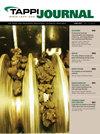商业和新兴快速热解技术的比较分析和基准
IF 0.6
4区 农林科学
Q4 MATERIALS SCIENCE, PAPER & WOOD
引用次数: 0
摘要
众所周知,生产可持续燃料和替代化石燃料是实现净零排放目标的关键解决方案之一。目前最先进的商业规模的生物燃料生产途径之一是快速热解。然而,由于需要支持性的监管环境和缓解与成本和原料质量相关的不确定性的策略,快速热解尚未得到广泛实施。在本案例研究中,对技术成熟度(TRL)为6及以上的三种快速热解技术进行了比较,以区分它们,并确定它们在经济上可行的条件。研究了循环流化床(CFB)、旋转锥(RC)和机械辅助流化床(MFB)快速热解技术。首先,进行了流程图和质量和能量平衡的比较。结果表明,RC结构可以处理更小的颗粒,从而具有更好的生物油收率。MFB配置在该过程的末端有一个递进冷凝装置,产生具有更高能量含量的近干油。研究了四种实施方案。第一种是快速热解独立工艺,其中所有选项都具有边际经济吸引力,RC配置在经济上优于其他两种。在第二种情况下,将快速热解装置整合到锯木厂中,可以显著提高收入和内部收益率(IRR)。实现生物油的全部价值(第三种方案)为MFB带来了更多的收入。最后,第四种方案涉及增加渐进冷凝装置,这将使资本支出(CAPEX)增加3%-4%,同时使收入增加32%-35%。敏感性分析强调了资金支持对资本成本的重要性,以及生物油对快速热解过程经济可行性的全面评估。渐进式冷凝产生更多的生物油附加值,使独立的快速热解过程更有利可图。本文章由计算机程序翻译,如有差异,请以英文原文为准。
Comparative analysis and benchmarking of commercial and emerging fast pyrolysis technologies
It is well established that producing sustainable fuels and replacing the fossil-based ones is one of the key solutions to achieving net-zero emissions goals. One of the most advanced commercial-scale pathways to biofuels available today is fast pyrolysis. However, due to the need for a supportive regulatory environment and mitigation strategies for uncertainties related to costs and feedstock quality, fast pyrolysis is not yet being widely implemented. In this case study, three fast pyrolysis technologies with a technology readiness level (TRL) of 6 and above have been compared to distinguish between them and identify the conditions under which they are economically viable. The circulating fluidized bed (CFB), rotating cone (RC), and mechanically assisted fluidized bed (MFB) fast pyrolysis technologies were considered. First, the flow diagram and a mass and energy balance comparison were addressed. It was revealed that the RC configuration has better bio-oil yields because it can handle smaller particles. The MFB configuration has a progressive condensation unit at the end of the process, which produces a nearly dry oil having a higher energy content. Four implementation scenarios were studied. The first was the fast pyrolysis standalone process, where all options had marginal economic attractiveness, and the RC configuration economically outperformed the other two. Integration of a fast pyrolysis plant into a sawmill in the second scenario was found to bring significant improvements in revenues and internal rate of return (IRR). Realization of the full value of bio-oil (the third scenario) brought significantly more revenues for the MFB. Finally, the fourth scenario involved adding a progressive condensation unit, which increased the capital expenditure (CAPEX) by 3%–4% while increasing revenues by 32%–35%. A sensitivity analysis highlighted the importance of financial support towards capital cost and the full valuation of bio-oil for the economic viability of fast pyrolysis processes. Progressive condensation leading to more added-value bio-oil makes the standalone fast pyrolysis process more profitable.
求助全文
通过发布文献求助,成功后即可免费获取论文全文。
去求助
来源期刊

Tappi Journal
工程技术-材料科学:纸与木材
CiteScore
1.30
自引率
16.70%
发文量
59
审稿时长
6-12 weeks
期刊介绍:
An internationally recognized technical publication for over 60 years, TAPPI Journal (TJ) publishes the latest and most relevant research on the forest products and related industries. A stringent peer-review process and distinguished editorial board of academic and industry experts set TAPPI Journal apart as a reliable source for impactful basic and applied research and technical reviews.
Available at no charge to TAPPI members, each issue of TAPPI Journal features research in pulp, paper, packaging, tissue, nonwovens, converting, bioenergy, nanotechnology or other innovative cellulosic-based products and technologies. Publishing in TAPPI Journal delivers your research to a global audience of colleagues, peers and employers.
 求助内容:
求助内容: 应助结果提醒方式:
应助结果提醒方式:


